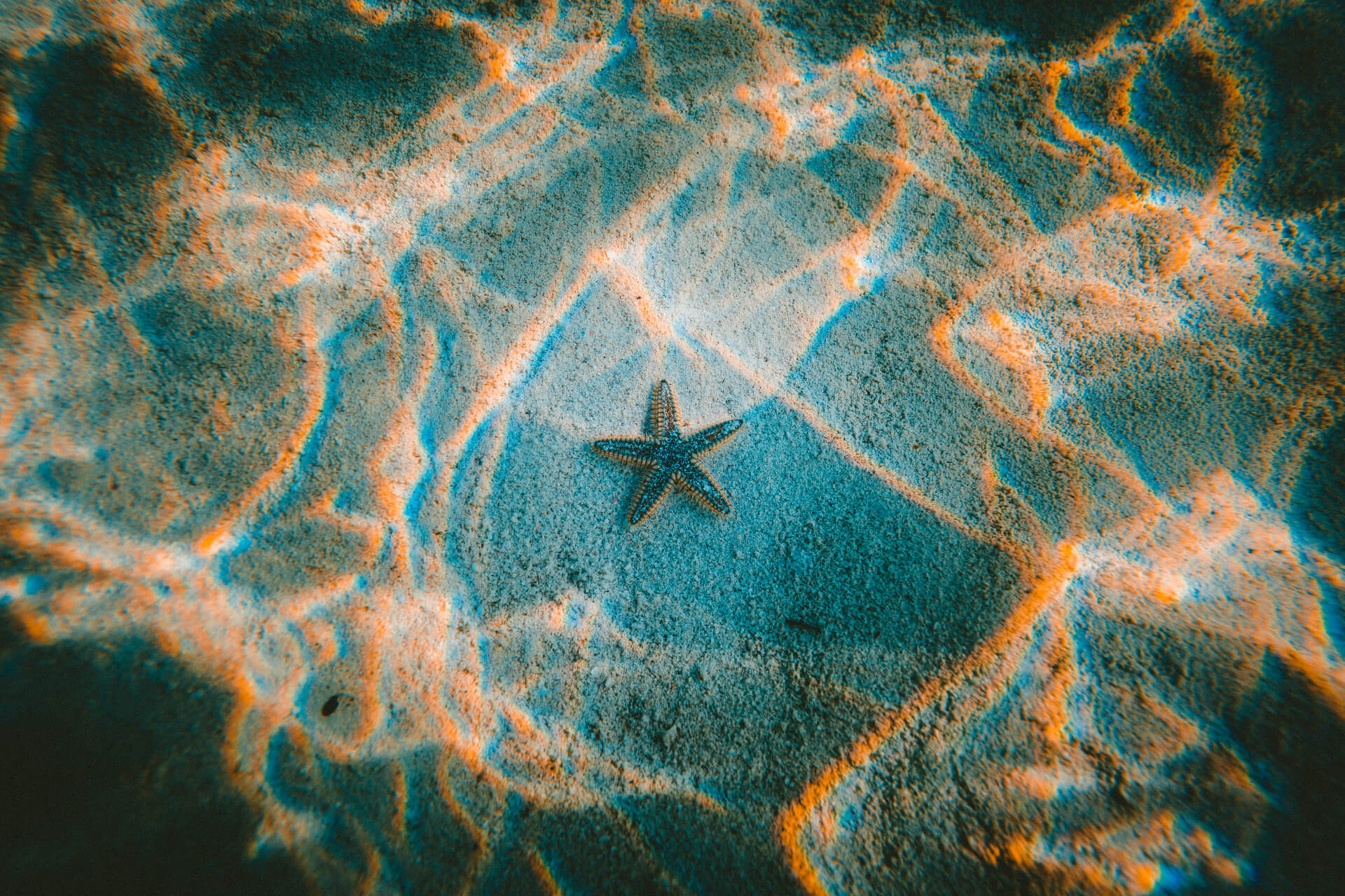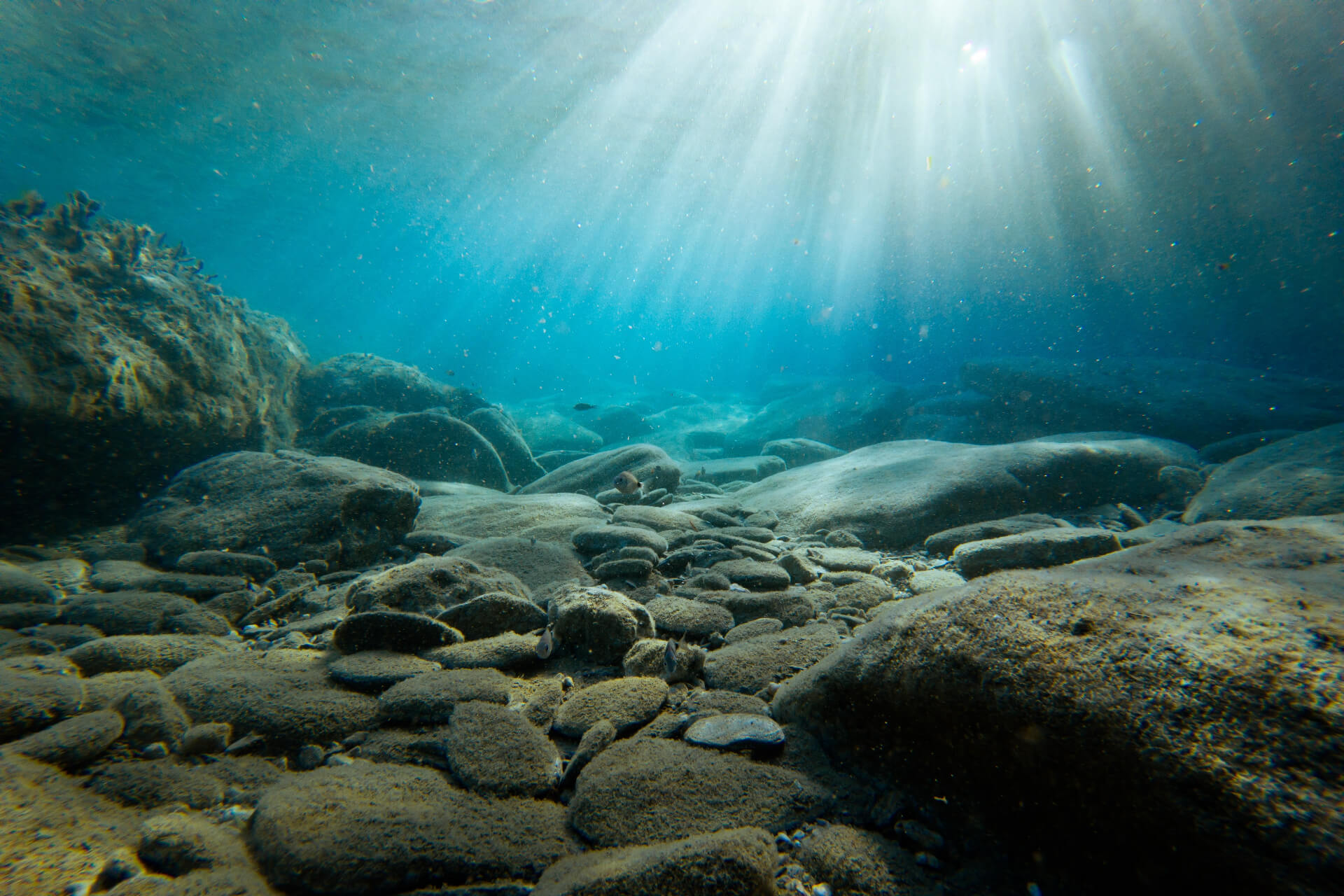
The Ocean Floor: Features from Every Zone
We are reader-supported. When you buy through links on our site, we may earn affiliate commission.
The ocean is a massive, dark mystery. Most of it remains unexplored, but experts have uncovered some information about what’s on the ocean floor. Each space might have creatures scuttling around the floor, but what are they surrounded by? Humans are so used to looking at mountains, forests, and waterways that it’s easy to forget that sea creatures witness ocean floor features all the time.

What Are the Layers of the Ocean?
The literal bottom of the ocean is not the only place where there is an ocean floor — each layer has a bottom shelf before it continues diving deeper. What rests on the ocean floor in each zone differs from the previous. Let’s define each region to understand the variances between the spaces better.
Epipelagic Zone
Coverage: Surface to 200 meters deep.
Also called: The Sunlit or Euphotic Zone
This is the area people are most familiar with. The sun can penetrate the water’s surface and extend its brightness for about 200 meters. After that point, it fades. It only comprises around 3% of the ocean but includes one of the most important fighters against the climate crisis — phytoplankton. They are carbon sinks that must stay protected.
Mesopelagic Zone
Coverage: 200 to 1,000 meters deep.
Also called: The Twilight or Midwater Zone
Large, heavy sea creatures like squid lurk here. Light is still present, but it is pretty dim. This continues as explorers go deeper — until they encounter the ocean’s many bioluminescent creatures.
Bathypelagic Zone
Coverage: 1,000 to 4,000 meters deep.
Also called: The Midnight Zone
Whereas the Twilight Zone might have some glimmers of light, the midnight zone is pure darkness. The waters are chilling, and the pressures are intense. The creatures that dwell here adapted to these harsh conditions, having special seeing and hearing abilities so they can continue to hunt and mate.
Abyssopelagic Zone
Coverage: 4,000 to 6,000 meters deep.
Also called: The Abyss
Sunlight is impossible at this depth, and it is immensely underexplored. Thanks to remote-operated vehicles, humans can learn more about this region with minimal environmental damage.
Hadalpelagic Zone
Coverage: 6,000 meters to the bottom of Challenger Deep in Mariana Trench.
Also called: The Hadal Zone, after the Greek god of the Underworld, Hades
Who isn’t afraid of the world’s deepest trenches? They are vast, dark, and empty, though humans still have much to unpack. Though it isn’t on the ocean floor, this zone features the deepest fish ever discovered. It is a cusk eel called the abyssobrotula galatheae at 8,370 meters down. However, other reports state the pseudoliparis swirei, a snailfish species, reigns supreme. Regardless, they are both marvels of the animal kingdom.
What Ocean Floor Features Exist in Every Zone?
Some features traverse multiple zones, while others are quintessential to specific ones.
Continental Shelves and Slopes
On the edges of all ocean basins are shallow continental shelves. They can be hundreds of square miles or narrow strips of land in the single digits. Light permeates almost all shelves, teeming with most of the ocean’s wildlife. A geological phenomenon like the Bering Strait is probably the most notable example.
At some point, the shelf ends and starts to decline into a continental slope. They aren’t usually at steep angles, but when that descent continues for so many miles, you would be surprised how deep in the layers you’ll go. Several continental slopes are sharper, such as Agulhas Bank off the coast of southern Africa.
Abyssal Plains and Hills
Going down a continental slope will eventually put you into an abyssal plain. They only exist in the abyssal zone. They are like continental shelves in that they are large pieces of flatter land, but they are even more significant. They are dark and explored oceanic wastelands that marine experts are dying to learn more about. Occasionally, the flatness will vary with an abyssal hill that sometimes reaches 1,000 meters in height.
The Mid-Ocean Ridge
The MOR is the longest mountain chain on the planet, stretching 40,390 miles. Some even crack the ocean’s surface, but most are underwater. The mountains go to the abyss and wrap around the Earth, where tectonic plates are divergent. The ridge changes shape constantly as new separations in the place yield more eruptions that release basalt to change its topography.
Seamounts
Seamounts are precisely what they sound like — underwater mountains or volcanoes. In the MOR mentioned above, all the mountains are seamounts so long as they do not break past the surface. The most famous seamount is no longer classified as such — more on that later!
Trenches
Between plains and seamounts, ridges and shelves, there might be a fall-off leading to a trench. These are defined by a steep continental slope into a narrow chasm thousands of meters down.
The Ring of Fire in the Pacific is home to some of the deepest and scariest trenches on the planet, surrounded by a series of earthquake zones and active volcanoes. The most famous trench is the Mariana Trench, which contains Challenger Deep — the deepest place humans have found in the ocean, just over 36,000 feet below the surface.
Volcanic Islands
Remember how seamounts do not escape to the surface? Volcanic islands are seamounts that do. Sometimes, they are just called islands, but volcanic activity is expected. The largest mountain on the planet is not Mount Everest — it is the volcano Mauna Kea on Hawaii’s Big Island. It is 13,800 feet above and 19,700 below sea level — surpassing Everest by more than a mile. It used to be a seamount, but it became an island after many years. Island status could be the fate of many seamounts.
Methane or Cold Seeps
When you picture a seafloor, you might see scurrying crabs and flora. But, you might also think of small streams of bubbles rising from cracks — these are methane seeps. Methane does not have an excellent reputation on Earth, but it is a valuable resource in the ocean.
Methane seeps force an essential carbon transfer process, which gets older carbon stores to organisms that need it to feed on. However, some organisms feed on the methane specifically, making these habitats unique.
Hydrothermal Vents
In the darkest depths, life cannot use photosynthesis to survive. They rely on chemosynthesis, which allows life, like bacteria, outside the sun’s reach to obtain power from chemical energy instead. Hydrothermal vents are a source of that chemical energy. Remember how some organisms eat methane from cold seeps? Some creatures perform similarly with the chemicals shooting out of these chimneys, such as:
- Hydrogen gas
- Hydrogen sulfide
- Ammonia
- Ferrous iron
- Oxygen

What Lies on the Ocean’s Floors
Apart from crustaceans, coral, shells, and countless other beings on the ocean floor, numerous features set its geography apart from terrestrial landscapes. They are mind-boggling and terrifying, spanning thousands of miles of unknown territory to humans. How much of it will we traverse in the upcoming years? It’s hard to tell, but perhaps we will discover more ocean-floor features along the way.
Share on
Like what you read? Join other Environment.co readers!
Get the latest updates on our planet by subscribing to the Environment.co newsletter!
About the author

Steve Russell
Steve is the Managing Editor of Environment.co and regularly contributes articles related to wildlife, biodiversity, and recycling. His passions include wildlife photography and bird watching.





